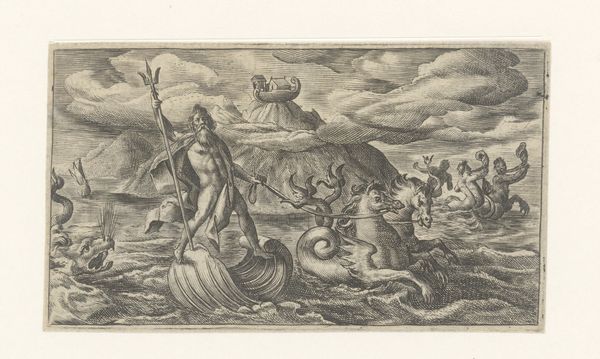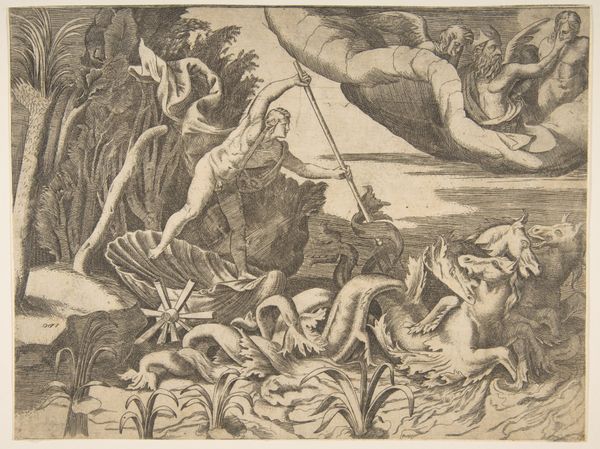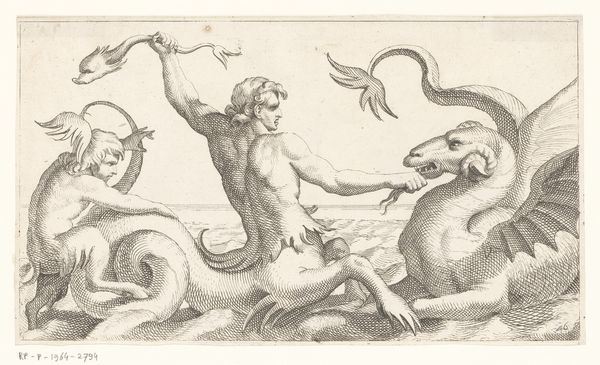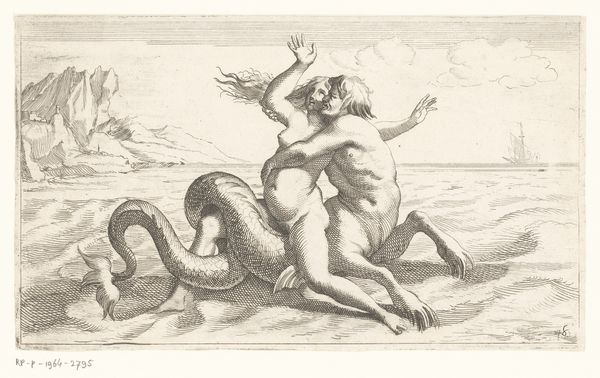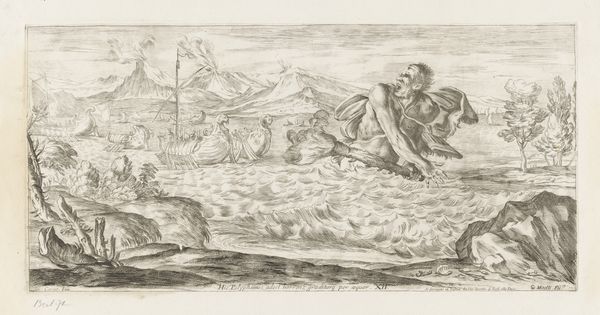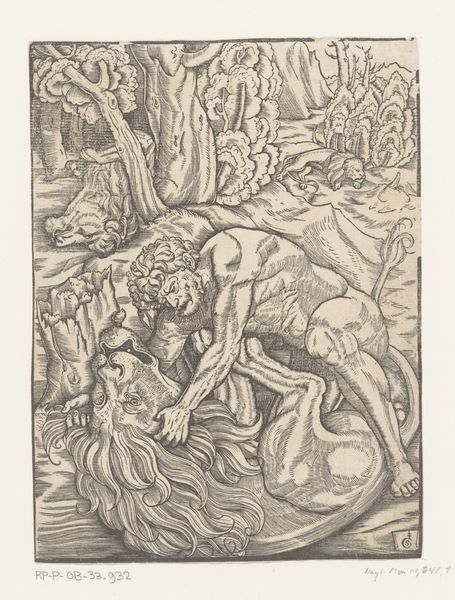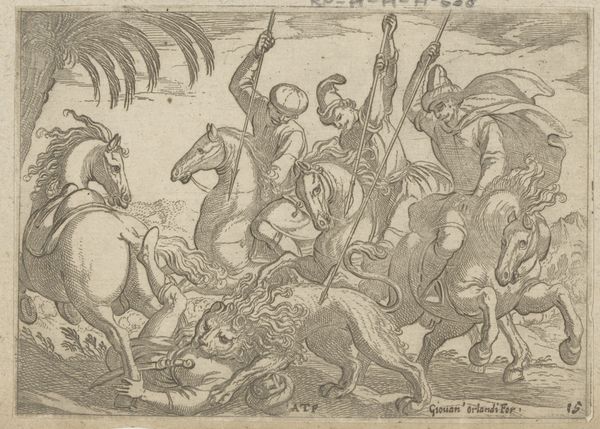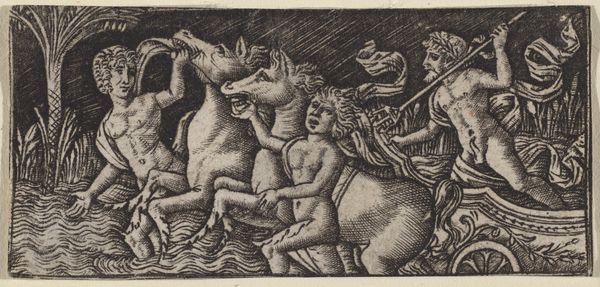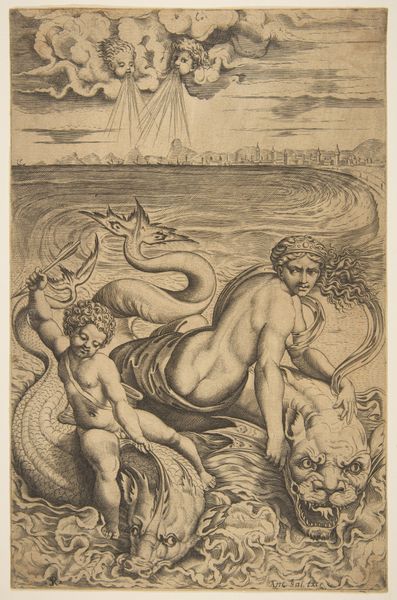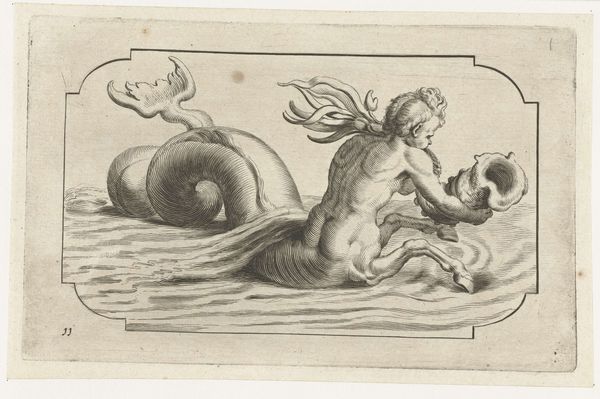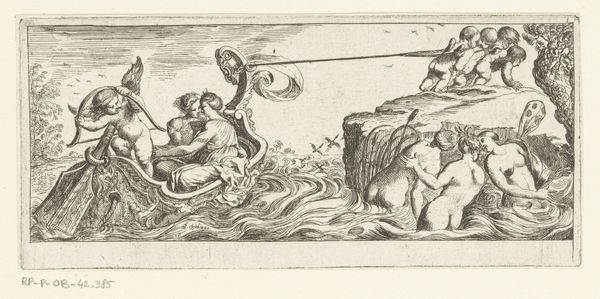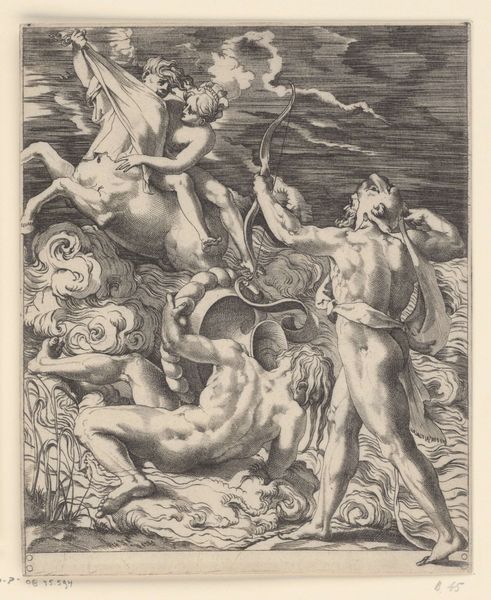
Hercules fight adragon in the centre, Achelous carrying off Deianeira upper left 1531 - 1576
0:00
0:00
drawing, print, engraving
#
drawing
#
ink drawing
#
pen drawing
# print
#
mannerism
#
figuration
#
form
#
mythology
#
line
#
history-painting
#
italian-renaissance
#
engraving
Dimensions: sheet: 10 5/8 x 16 7/8 in. (27 x 42.8 cm)
Copyright: Public Domain
Editor: So, here we have Giulio Bonasone’s engraving, "Hercules fight a dragon in the centre, Achelous carrying off Deianeira upper left," likely created sometime between 1531 and 1576. It’s incredibly detailed, almost overwhelming, with all these figures swirling around in the water. I’m really struck by the intensity of the battle, but there is some other drama happening. What draws your eye in this print? Curator: You know, the organized chaos is exactly what grabs me, too! It's like looking into a Renaissance fever dream. Hercules is front and center, grappling with this fantastic dragon, but there’s a secondary narrative of Achelous and Deianeira tucked away. It’s this layering that I find really compelling, a sort of "spot the story" challenge. Tell me, how does the linear quality and absence of colour in the medium inform your sense of dynamism and drama here? Editor: That's a great question. Because it’s just lines, the figures feel…hyper-defined, almost sculptural. It pushes that dynamic feel because of how stark it is. The whole scene reminds me of complex stagecraft somehow. All these stories happening at once. What about the mythological aspect of this work? I admit my Greek mythology knowledge is a little patchy. Curator: Well, you've put your finger right on it. Think about the source stories and why Bonasone might choose to bring these separate narratives of battling humans and Gods into one composition. I read it as a symbolic soup, swirling themes of heroism, transformation – Achelous *was* a shapeshifter after all - and even the inevitability of fate. Deianeira is, well, in for a rough ride. I’m not sure that I'd like Bonasone as a therapist... but you do make me want to reread those tales. Editor: It’s funny, it all seemed so energetic before but knowing the narratives now adds another, darker layer to it all. Thanks! Curator: Exactly! Now, you see the depth woven into what appears a simple scene. That’s why diving into the classics is so important for art history; and who knew that a bit of the dark side would brighten our day!
Comments
No comments
Be the first to comment and join the conversation on the ultimate creative platform.
